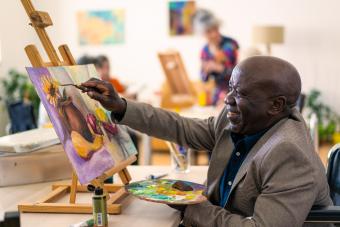
The history of volunteerism in America is rich and complex. As long as the United States has been a nation, it has focused on helping and improving the lives of others, and this has produced a culture that deeply values volunteer opportunities.
Timeline of Volunteerism
The following timeline provides a glimpse of how volunteerism developed in America:
1700s
- 1736: Benjamin Franklin founded the first volunteer firehouse. This tradition still continues today, as many small towns and cities have a volunteer fire department that makes a huge difference in local community life.
- 1770s: During the Revolutionary War, volunteers got together to raise funds for the war efforts and organize boycotts of various products from Great Britain (such as the Boston tea party) showing both their philanthropic attitude and patriotism.
1800s
- 1820s: The religious rejuvenation during the Second Great Awakening began in the 1820s. It inspired waves of social reform (i.e. temperance, the abolition of slavery, and women's rights) and it moved young people to get involved with volunteer efforts.
- 1851: The now-prolific YMCA also started in the mid-1800s when a sea captain in Boston saw how well the Y worked in London and decided to open one in the United States.
- 1865: William and Catherine Booth form the Salvation Army, which would grow into one of the biggest networks of volunteerism in the nation.
- 1881: The American Red Cross was established and would become one of the biggest volunteer organizations in history.
- 1887: Another well-known charity, the United Way, began in Denver when a local woman, a priest, two ministers and a rabbi joined together to form the organization.
1900s
- 1905: A lawyer in Chicago founded the Rotary Club where professionals could come together and collaborate on ways to give back to their communities.
- 1915: A group of businessmen in Detroit, Michigan formed Kiwanis International to bring community and business leaders together to foster volunteerism projects.
- 1917: A Chicago professional formed Lions International to encourage volunteerism among businesses and industry leaders in local communities.
- 1930s: Today's soup kitchen concept began during the Great Depression, as the country experienced an overwhelming need for the simplest of things: food and shelter.
- 1940s: During World War II, volunteer campaigns went to work supporting both servicemen and civilians in a variety of areas. Volunteer activities included nurse's aides, civil defense (i.e. auxiliary firefighters), planting victory gardens, and donating scrap metal and rubber.
Flower Children and Jesus Freaks
As the 20th century waded into both the Hippie Era of the 1960s and the massive wave of revivals associated with the Jesus Movement in the 1970s, American culture saw an explosion of impactful charitable organizations from both secular humanist-based charities and religious nonprofits that mirrored the burst of reform movements of the late 1800s.
- 1961: Much of the secular volunteerism during this period began with government programs. In 1961, John F. Kennedy founded the Peace Corps, a secular organization that began creating volunteerism opportunities in communities around the world.
- 1962: The famous comedian and devout Roman Catholic Danny Thomas founded St. Jude's Children's Research Hospital.
- 1964: Through Lyndon Johnson's War on Poverty program, the government founded VISTA (VolunteersinServicetoAmerica), which used government resources to create a secular volunteer organization to mobilize volunteers nationwide.
- 1970: The faith-based charity Samaritan's Purse was formed in America, which has mobilized volunteers and resources from around the world to disaster areas.
- 1985: The seeds of one of the biggest secular charities and volunteer-mobilizing organizations in history, The Bill and Melinda Gates Foundation, was planted when Gates released Windows. He would later form his charity organization in 2000.
- 1994: The innovative truck-driving Convoy of Hope, which hits the road with convoys and organizes thousands of church volunteers into city-wide volunteerism events every month across the nation, was formed by a small family in Missouri and has grown into a vast mobilization of volunteerism.
Volunteerism in the New Millenium
The history of volunteerism in America continues to be written today. Now volunteers find projects through digital apps that you can use to find a worthy cause from the comfort of your phone. Or maybe instead of joining a group, you'll be the one to start the next big world-changing volunteer organization.







